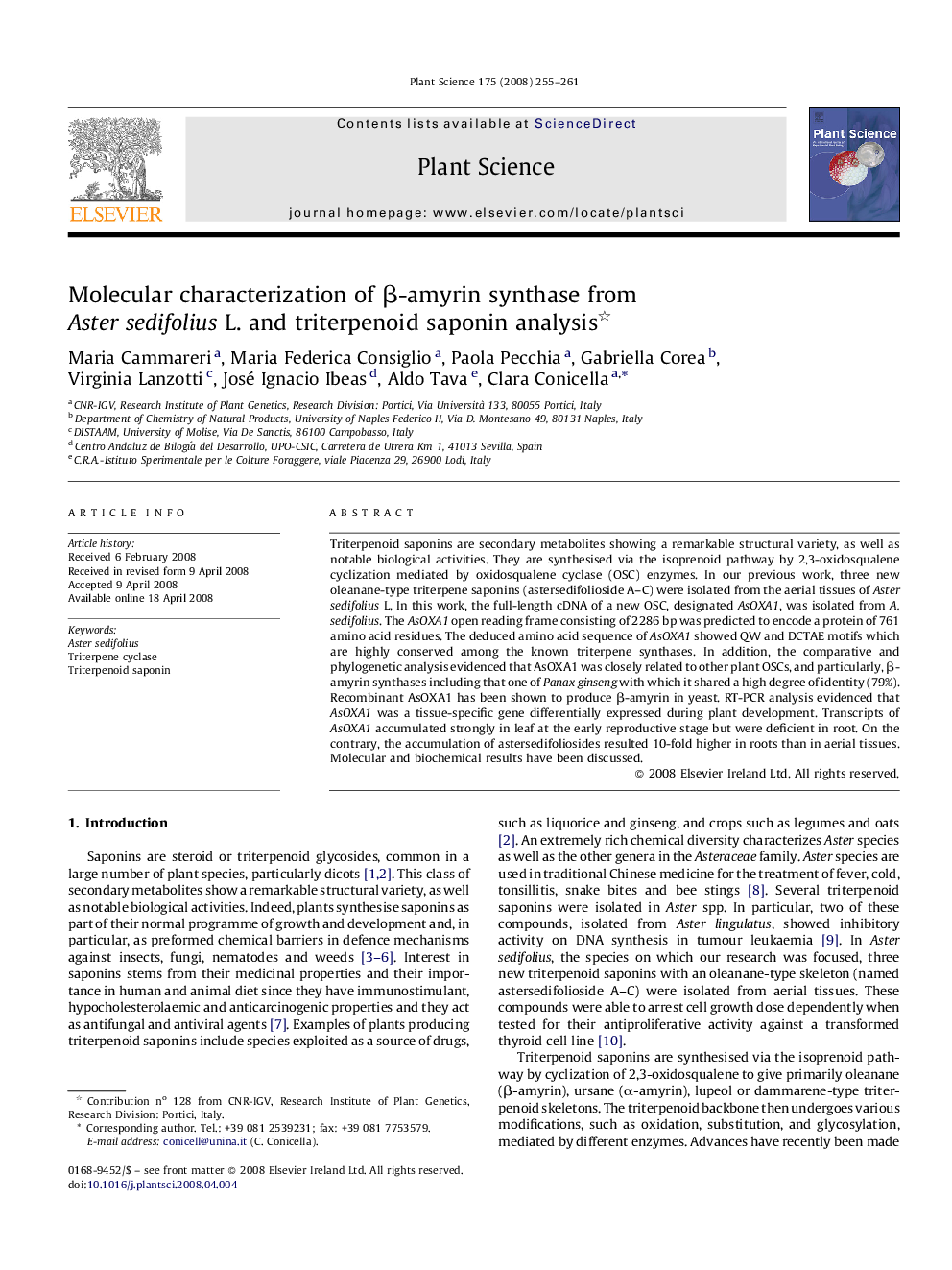| Article ID | Journal | Published Year | Pages | File Type |
|---|---|---|---|---|
| 2018166 | Plant Science | 2008 | 7 Pages |
Abstract
Triterpenoid saponins are secondary metabolites showing a remarkable structural variety, as well as notable biological activities. They are synthesised via the isoprenoid pathway by 2,3-oxidosqualene cyclization mediated by oxidosqualene cyclase (OSC) enzymes. In our previous work, three new oleanane-type triterpene saponins (astersedifolioside A-C) were isolated from the aerial tissues of Aster sedifolius L. In this work, the full-length cDNA of a new OSC, designated AsOXA1, was isolated from A. sedifolius. The AsOXA1 open reading frame consisting of 2286 bp was predicted to encode a protein of 761 amino acid residues. The deduced amino acid sequence of AsOXA1 showed QW and DCTAE motifs which are highly conserved among the known triterpene synthases. In addition, the comparative and phylogenetic analysis evidenced that AsOXA1 was closely related to other plant OSCs, and particularly, β-amyrin synthases including that one of Panax ginseng with which it shared a high degree of identity (79%). Recombinant AsOXA1 has been shown to produce β-amyrin in yeast. RT-PCR analysis evidenced that AsOXA1 was a tissue-specific gene differentially expressed during plant development. Transcripts of AsOXA1 accumulated strongly in leaf at the early reproductive stage but were deficient in root. On the contrary, the accumulation of astersedifoliosides resulted 10-fold higher in roots than in aerial tissues. Molecular and biochemical results have been discussed.
Keywords
Related Topics
Life Sciences
Agricultural and Biological Sciences
Plant Science
Authors
Maria Cammareri, Maria Federica Consiglio, Paola Pecchia, Gabriella Corea, Virginia Lanzotti, José Ignacio Ibeas, Aldo Tava, Clara Conicella,
